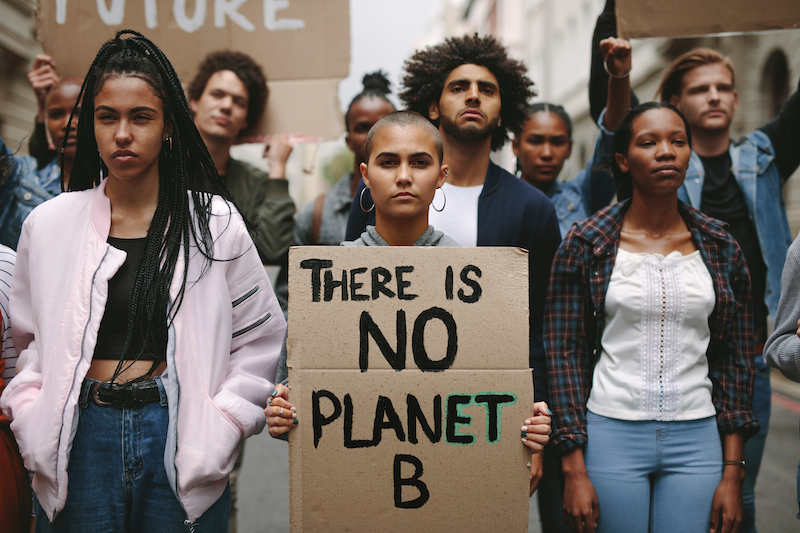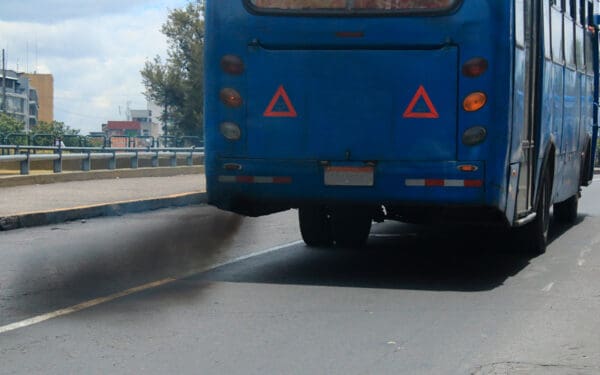
We have a responsibility to break the pattern of sacrificing some communities to benefit others in our environmental policies. A just transition can do that. Photo: Shutterstock.
From coast to coast and across the globe, it is clear from the weather events of the past year that climate change is here – and it presents the most pressing environmental threat of our time. Storms keep getting worse, heat waves more devastating, cold snaps more chilling.
Through my work at CLF, I’m fighting alongside my colleagues to slow and, hopefully, reverse worsening climate impacts here in New England. Of course, I’m fighting for our majestic landscapes and critically endangered species. But I’m also fighting for our people – so we can all enjoy a healthy climate and livable future.
Even while we collectively experience bigger hurricanes, destructive wildfires, and deadly heat, the reality is not everyone experiences climate change to the same degree. There are layers of systems, policies, and decisions by our governments and corporations that force the worst environmental harm on certain communities, particularly people of color and low-income communities.
I would argue that the surest way to succeed in meeting the most urgent challenge of our time is to ensure those with the most at stake are at the table. We must account for these historic and on-going wrongs in our climate solutions and break traditionally exclusionary practices – a just transition can do that. Let’s look at what a “just transition” means for New England’s clean energy revolution.
What Does “Just Transition” Mean?
The concept of a “just transition” originated from trade unions, which were worried workers would be left behind as environmental laws impacted the job market. The term has since evolved to encompass other communities that have historically been left out of environmental work, like Black and Brown communities, less affluent cities and neighborhoods, and our neighbors with limited English proficiency.
A just transition is, in part, about shifting away from fossil fuel dependence and towards clean energy, like solar and wind. But the ultimate goal for a just transition is to do this shift in a way that prioritizes communities that have suffered the most, including lower-income communities and people of color, since they often bear the brunt of polluting infrastructure like oil refineries and highways. The transition also prioritizes those who stand to lose the most as jobs shift from polluting to clean energy industries.
We can achieve a just transition by ensuring that our journey toward clean energy simultaneously follows the lead of both of these communities. Solutions must anticipate and address the economic impact of our shift. Those whose livelihoods depend on jobs in the fossil fuel industry need to have healthier and equally (if not more) sustainable job opportunities. And policies must also protect historically marginalized communities from continuing to shoulder the burden of environmental damage.
Why is a Just Transition Important for New England?
No matter where you live, we all want the same thing for ourselves and our loved ones. We want a healthy and livable future for our children, we want to keep the heat and lights on in our home without sacrificing groceries or medicine, and we certainly want our future generations to live free from the burden of worsening natural disasters. If we hope to slow the crisis threatening our lives and environment, we can’t delay getting off fossil fuels. But in doing so, we have a responsibility to avoid replicating decisions that sacrifice some for the benefit of others.
We must acknowledge that when energy prices spike, some families must choose between keeping their house warm or putting food on the table. We must recognize that people of color breathe more toxic air pollutants because planners steamrolled car congested highways through their communities. We must be cognizant that many do not have houses or apartments to return to after a severe flood. We must understand that breaking the grip fossil fuels have over us will mean some people will lose their jobs, and we need to be prepared to help them find new ones. We must act on the fact that if we don’t put new, renewable energy projects in overburdened communities first, where these communities directly benefit from the project and contribute to its development, we will continue to repeat past wrongs.
Ignoring these truths when charting our course towards clean energy leaves people behind to suffer. That is unacceptable, and it’ll set our transition up for failure. Everyone in New England deserves to benefit from climate solutions.
Here at CLF, we’re working to address the many ways climate change affects people’s lives and livelihoods. In Vermont, we’re watchdogging the Affordable Heat Act to ensure the law’s implementation prioritizes delivering clean heating solutions to renters and low-income families. Across the region, we’re collaborating with communities to listen to what New Englanders want out of transportation climate solutions. And in Massachusetts, we’re joining neighborhoods in their fight to prevent new dirty, polluting power plants, like the Palmer biomass plant, from pumping out air and climate pollution.
How Do We Make Our Clean Energy Transition Just?
Two important factors guide a just transition.
First, we must think holistically about climate change. Getting off fossil fuels requires more than just turning on a switch – and has impacts that reach into every aspect of our lives. The transition requires us to shift our thinking from having a singular focus, i.e., slashing carbon pollution, to one that also touches on a variety of social issues, like housing policy, food security, and the job market.
We also need to turn business-as-usual policymaking on its head. Traditionally, climate policy making has excluded people most affected by the crisis. Despite shouldering the burden of climate change’s environmental threats, these communities weren’t (and largely continue to not be) given a voice in what policies and solutions should look like.
That’s why we must start developing solutions from the ground up, with the people who know what’s best for themselves. The people most affected by the threat we’re trying to solve deserve to have a say and be heard.
Before crafting climate solutions, we need to identify and engage with all potentially affected communities. We have a duty to listen to what people want and then support them in creating policies to meet these needs. This approach to policymaking isn’t a one-and-done deal. It requires us to commit to continually evaluating and updating policy to be as effective as possible and reflect changing community needs. Simply put, everyone is involved in a just transition.
What Comes Next?
A just transition isn’t a warm and fuzzy dream for the future. This work is happening now. A national example is the Biden administration’s Justice 40 policy, which mandates at least 40% of the benefits from federal environmental investments – including those within the historic Inflation Reduction Act – are directed to historically oppressed communities.
Here in New England, CLF applies the just transition framework to everything we do across all our programs. We work with and support our local partners in passing and enforcing laws that require states to correct the historic environmental burdens foisted onto low-income communities and people of color. And we promote climate solutions that benefit our economy and provide opportunities for displaced workers, as well as those seeking new opportunities.
We need to see this commitment to a just transition represented in every aspect of climate action, both nationally and in New England. And that means never again excluding the people most burdened by climate change. CLF is committed to doing so, and we urge all New Englanders to call on our decision-makers to do the same.



